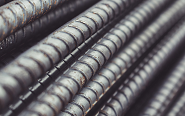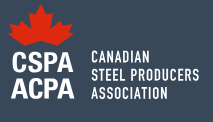Trade Cases

How to Request a Section 232 Exclusion
Written by Tim Triplett
March 18, 2018
Details on how to request an exclusion from the Trump administration tariffs on steel and aluminum will be published in the Federal Register tomorrow. We received a copy of the exclusion procedure and some comments from trade attorney Lewis E. Leibowitz.
President Trump, using his authority under Section 232 of the Trade Expansion Act of 1962, has determined that unfair imports of steel and aluminum pose a threat to the domestic industries, and thus to national security. On March 8, he announced tariffs of 25 percent on steel imports and 10 percent on aluminum imports from all nations except Canada and Mexico. The tariffs are to take effect on March 23.
Steel and aluminum users in the United States may apply to the Commerce Department for exemptions on imported metal products that are not produced in the United States in a sufficient amount or of a satisfactory quality to meet their needs.
According to the interim final rule set for the Federal Register, “only individuals or organizations using steel in business activities (e.g., construction, manufacturing, or supplying steel product to users) in the United States may submit exclusion requests.” Left unclear is if or how individual countries may request exemptions.
“Under the interim rule, exclusions will apply to the requesting entity unless the Commerce Department decides to exclude broadly based on policy reasons. This is an unusual procedure in trade and tariff matters. Each interested company must request an exclusion, even if its competitors (customers?) have already received an exclusion,” said Leibowitz.
All exclusion requests must be in electronic form and submitted to the federal rulemaking portal (www.regulations.gov). Each request should clearly identify and support the basis on which the exclusion is sought. There is no time limit for submitting exclusion requests. The review period normally will not exceed 90 days, including adjudication of objections submitted on exclusion requests. Exclusions approved will generally be for a term of one year.
The Commerce Department anticipates about 4,500 exclusion requests on steel products.
Steel Market Update will have more details about how to go about filing for an exclusion in our Tuesday issue.
A side note, Lewis Leibowitz will be kicking off this year’s SMU Steel Summit Conference on Aug. 27 around 1:30 p.m. ET. He will be available to answer questions you may have about AD/CVD, circumvention, Section 337 and Section 232. You can find more information about our conference and how to register at: www.SteelMarketUpdate.com/events/steel-summit.

Tim Triplett
Read more from Tim TriplettLatest in Trade Cases

Canada moves to curb steel imports with TRQs
Canada has implemented tariff-rate quotas (TRQs) on steel imports to help stabilize its domestic market.

Commerce launches probe into unfairly traded rebar imports
Here are the details and a case timeline for the rebar trade case recently initiated by the Commerce Department.

Leibowitz on Trade: Who is winning the tariff debate?
Most economists will tell you that universal tariffs will result in inflation and reduce demand, causing a recession or worse. (After all, this is what happened in the 1930s). It is a rare product that is so essential that demand will not go down if prices go up.

Canadian steel industry fears thousands of job losses from US tariffs
The Canadian steel industry is bracing for thousands of job losses because of US tariffs, the Canadian Steel Producers Association says.

US, Mexico mull tariff-rate quota system: Report
Could the US and Mexico end up with a tariff-rate quota system?
